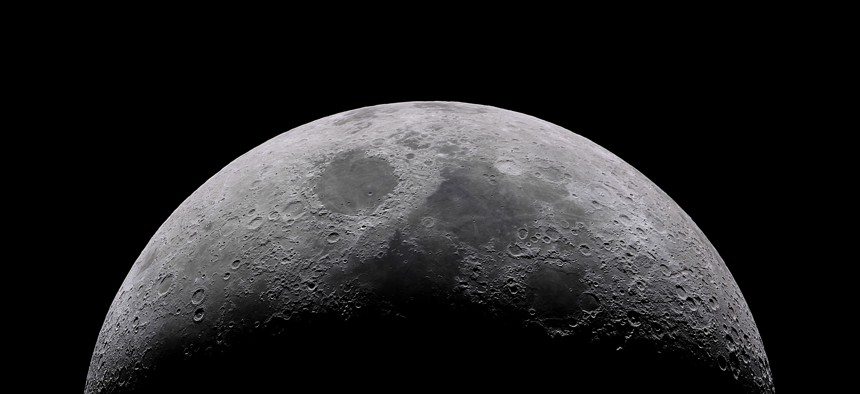SpaceX, Blue Origin, others set to compete in military Moon business program
Rather than simply send another lander, DARPA’s newest space program seeks to advance multiple technologies simultaneously.
It’s one thing to get to the Moon and another to create a self-sustaining business there. Some 14 teams including SpaceX, Blue Origin, and Northrop Grumman will compete to launch a viable moon “architecture” under DARPA’s 10-Year Lunar Architecture, or LunA-10, program, the agency announced on Tuesday.
DARPA is looking for something well beyond another moon lander: ideas for “a future civil lunar framework,” for 2025 to 2035 and beyond, according to the solicitation. That could include a lot of robots—for mobility, energy, communications, and navigation. The point is to find a way to send them all as part of “standard payloads that can be delivered to the lunar surface and, in the future, scale up to the size of ubiquitous infrastructure for the Moon.”
Why not just a lander? Because yesterday’s moonshots were single efforts that didn’t yield much in terms of sustainable lunar endeavors. China has already followed in the U.S. footsteps, placing an unmanned lander on the Moon’s far side in 2019. Its upcoming 2028 mission seeks to land a robot that can collect lunar samples, then bring them back to Earth.
DARPA is betting that the United States can advance a much wider set of technologies more quickly by focusing more on what moon colonization might actually look like. That could set up the United States as the go--to logistics partner for other countries or companies looking to get to the moon for sustained commercial applications like mining.
The Pentagon is also worried that China’s lunar missions have a secret military purpose and that they threaten U.S. satellites; it's hard to track objects approaching satellites from the direction opposite Earth. The more economic activity on the moon, the harder it will be for China’s activities there to remain unobserved.
NEXT STORY: NIST wants a dictionary of AI development




